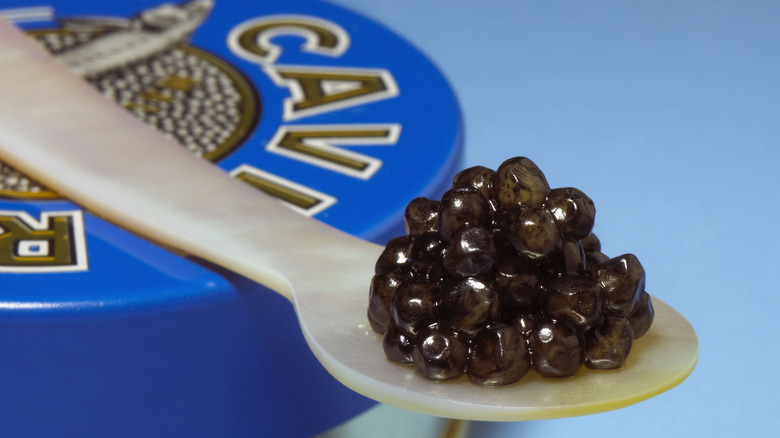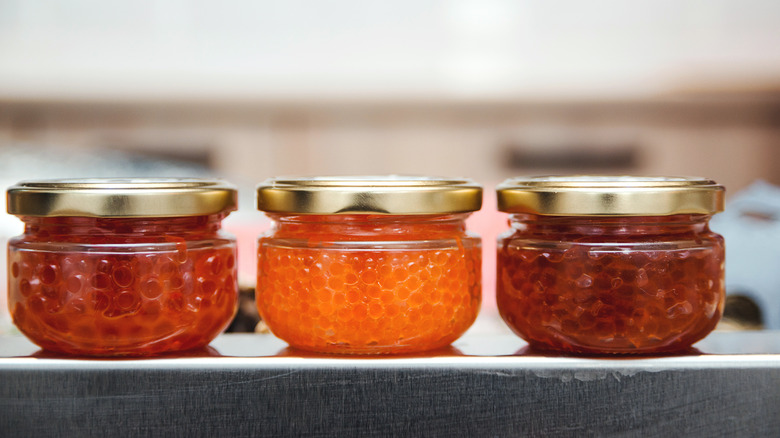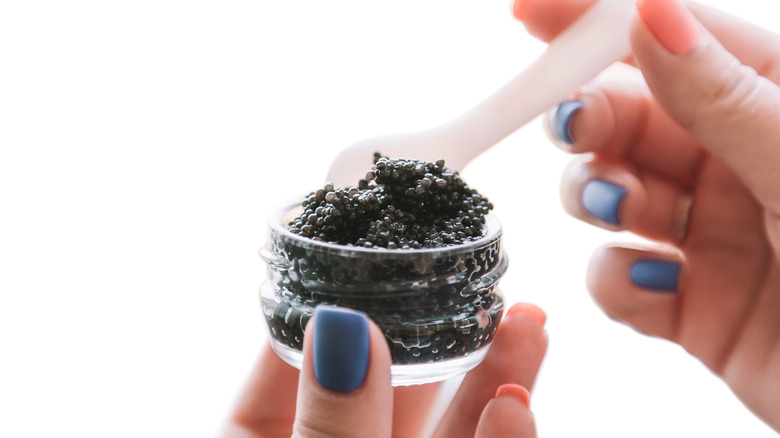Caviar: To Chew, Or Not To Chew?
It may be hard to believe, but caviar hasn't always been the luxury of the elite: the delicate and highly nutritious sturgeon eggs were once abundant on several continents. The first mentions of sturgeon roe as a delicacy date back to ancient Greece around the 4th century BC and Persia, where the name "caviar" comes from. The Persians were also the first to cure the sturgeon roe with salt, creating the original briny caviar we enjoy today.
While ancient cultures enjoyed this highly prized delicacy rather freely, things quickly evolved in a different direction when Russia, the country considered to produce the world's finest caviar, put an end to the few centuries of sturgeon's roe indulgence. Beginning in the 12th century, extreme overfishing of sturgeon in the Caspian Sea made caviar inaccessible to the common people and put it on the tables of the tsars and the upper classes. The sturgeon demise reached its peak in the 20th century, when it finally became an endangered species, leading to CITE (Convention on International Trade in Endangered Species of Wild Fauna and Flora) banning exports of wild caviar from the Caspian region in 2006.
Sad news for sturgeons, but collective efforts toward sustainable aquaculture have restored the supply of caviar and made it much more accessible worldwide.
Not all caviar is considered genuine
Okay, so let's clarify what caviar is. To put it simply: All fish produce roe, but not all roe is caviar. Sometimes you hear salmon roe referred to as red caviar or the roe of American paddlefish, which is very similar to sturgeon and is also referred to as caviar. While it's tempting to put them in the same basket, you should know that real caviar only comes from sturgeon species. There are about 27 known sturgeon species today, but the most sought-after caviar comes from the three legendary species: osetra, beluga, and sevruga.
You'll probably never get your hands on wild Beluga caviar (unless it comes from an illegal trade), but thanks to advances in aquaculture and breeding, you can now enjoy these nearly extinct sturgeon species. A small tin of entry-level sturgeon caviar still costs over a hundred dollars, but you can save it for a special occasion.
Some caviar producers have taken breeding to the next level and developed fascinating hybrid caviar varieties. The renowned French caviar brand Pettrosian offers some very appetizing-sounding caviars such as Kaluga Huso Hybrid or the exotic Siberian Baika caviar, prized for its deep oceanic flavor.
The best way to savor caviar
So how do you savor the popping buttery saltiness of caviar? There are plenty of proven ways to enjoy the delicate taste of the tiny sturgeon eggs, as well as some common myths we found quite intriguing. One such theory floating around the internet is that we should definitely chew the caviar.
According to Christopher Klapp, general manager of Pettrosian Restaurant and Boutique, high-quality caviar should be allowed to melt in your mouth without chewing on it, especially when enjoyed plain. Christopher believes that this allows the complex flavor and butteriness that caviar releases in the mouth to come through more fully. He especially points out that our teeth can't really taste caviar, so chewing it can cause some of its flavors to be lost.
Before you next serve delicious cornmeal blinis with caviar, take a moment to really appreciate the caviar; scoop a tiny bit with a small spoon (avoid metal if you can), turn it over on your tongue, and let the flavors slowly develop their full potential. The first time you buy high-quality caviar, you'll never forget the experience.


